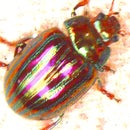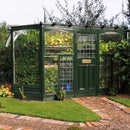Introduction: Whale Pie!
Whale pie -
a mega pork pie - 16 inches long and weighing 13 pounds!
- What happens when someone challenges you to make a whale-sized pork pie?
- This delicious leviathon!
I made this beast of a pie for a picnic for Natural History Museum staff. This was an everyone-bring-along-a-dish party in Kensington Gardens, a lovely park in London. At the time we had a Whale exhibition showing. Someone had joked I should make a whale pie. I like a challenge, and this hefty treat was the result. It fed a lot of people on a very enjoyable afternoon picnic in the sun.
What's in this instructable?
1. Make a traditional British pork pie.
Obviously, it's not made out of whales. It's a traditional British gala pie. Gala pie is a pork pie with eggs in the centre. This one was just really, really substantial. At least 15 people had a good old slice, with a bit left for later.
In this Instructable, you can see how to make this type of pie in the traditional way. Although impressive, it's not that hard to make. It uses quite simple ingredients in the filling - just pork, bacon and boiled eggs, with a simple flour and lard hot-water crust pastry.
2. If you are feeling adventurous, make a bespoke pie mould!
As an added bonus, there is also a section on making a raised pie mould. This one is whale shaped of course, but you can make any shape you want. I made this mould from a sheet of stainless steel shelving from a commercial kitchen.
Supplies
The ingredients for the filling in a traditional British pork pie are very simple. It's just minced pork, seasoned with salt and pepper. Some pies use plain pork and some used cured pork. I like a mix of both. This one uses a mix of plain shoulder of pork, belly pork and smoked cooking bacon. The pastry used just lard, flour and salt.
This pie was big (about 16" long, about 4" high and about 13lb when cooked). As a result, I needed 12 eggs for the centre.
To get the whale shape, I made a custom mould from stainless steel sheet. You don't have to buy this. You can often find old thrown-away objects like pedal bins or breadbins made from stainless steel. You can just cut out pieces from these using metal-cutting snips (or an angle grinder, which is a bit messier).
I used food-grade stainless steel, cut from a reclaimed commercial kitchen shelf, which I had previously recovered from trash.
Step 1: Making a Whale-shaped Raised Pie Mould
To make a bespoke pie of this size, you need to make your own mould. Here's how you can do this.
To get started, I cut long ribbon shapes of stainless steel from an old commercial kitchen shelf. Each sheet was about four and a half inches wide (12cm or so).
It is easiest to shape the mould before you join it all together. I cut two seperate steel ribbons for the sides of the mould and formed the shape of half of a whale shape in each, then joined them together.
For this, I used a vice to bend the metal to create folds, with hammers, cold chisels and mallets to develop a good shape. I finessed the shape on my anvil. Finally I joined the two whale halves together to form a closed mould. I used pop rivets to do this.
To show that you can make more complex moulds for raised pork pies, I have included a few images of a previous one, made from a stainless steel bin.
Step 2: Making the Pie Filling
The filling in a standard pork pie is really, really simple. You don't precook it or make any sauces or anything. It is just raw minced meat with salt and pepper to season. It cooks in the pie.
In this case, I used a gala pie style, which is a standard pork pie, but with boiled eggs in it. This is optional, but adds a nice twist when you cut into to. I ground the pork manually with a hand grinder. It gives a good even texture to the mince. This grinder is a nice 1970s Italian grinder, which has a very handy suction cup to hold it onto a smooth surface.
The mixture I used here is pork shoulder, belly pork and cooking bacon.
Shoulder is a good general purpose cut and is about 60% of the meat mix. The belly pork and bacon make up a further 20% each. Belly pork is good because it very fatty. This adds more flavour and also stops the pie from being dry. The bacon is used to give more flavour. It also adds colour as the cured bacon meat is pink.
You can vary the proportions of different porks to your taste, but DO NOT BE TEMPTED TO USE LEAN PORK. It is is too bland for a pie and mostly crucially will make your pie very dry. It's a bit like making ice cream with skimmed milk. It might sound healthy, but it tastes pretty underwhelming.
If you are worried about the fat content, then basically, this type of pie is not really for you. It is one of those things (like a massive chocolate sundae) that you make and share to be enjoyed, not fretted over.
Step 3: Hot Water Crust Pastry
The pastry in a traditional pork pie is made with hot water. This is known as a hot water crust.
It is just four ingredients in roughly these proportions:
- 50-60% flour - you normally use at least some strong bread flour. Recipes often suggest about 90% plain to 10% strong flour. Hot water crust pastry is ideal for making cold pies intended to be carried as a snack. The pastry is stronger, the higher the proportion of hard flour you use, so if you really want the crust to be robust, use more. In this case it was all bread flour.
- 20-25% hard fat - I used lard here. Bacon fat or beef dripping are both excellent and butter works if you want a richer sweeter taste. If you use stronger flour, then generally increase the prortion of fat slightly. It counters the strength of the hard flour with richness when you eat it
- 20-25% water.
- Quite a bit of salt, to your taste.
The water, salt and lard are added to a pan on a low heat until the fat has melted. The water should not be boiling. It just needs to be hot enough to melt the fat. The flour is then stirred in to form a paste.
The paste is fairly easy to work with, to squidge into the pie moulds. However, you do need to work the paste when it is hot. It gets harder to handle as it cools, so making the pie cases should be done quickly after mixing the paste.
Step 4: Constructing the Pie and Its Filling
The raised pie mould I used here is traditionally used for all sorts of savoury pies, and there are some spectacular examples of Victorian raised pie moulds. Not all pork pies use a mould, but this beauty needed to be a specific shape, so a mould was required. (see step 1, for mould making details).
I started the pie build, by greasing the mould and placing it on a baking tray with baking paper on it. The hot water crust paste was then pressed into the mould. You need to do this when the paste is still hot or it gets very stiff.
The pie was lined with about a quarter inch thickness of paste. Then, I piled a load of the minced pork in to make a base layer and pressed that firmly into the mould. On top of this, I lined up all the boiled eggs. I cut off the whites on the end of the eggs, so that all slices would get a consistent yellow yolk, when cut. This needed 20 in total.
Once the eggs were in position, I packed more minced pork filling in snugly around them.
Once full, I added a lid of more paste and sealed it closed.
Step 5: Baking the Pie
Baking a pie of this size obviously takes a fairly long time. Because of this, you should use a fairly low heat. About 180C is about right to start with, then turn down to more like 140-150C. It is worth checking periodically, to make sure the paste is cooking into a golden brown crust and not burning.This pie took about 2 hours
The dorsal fin shown i these pictures is not especially accurately positioned anatomically. It should be further down the back. It looks a tiny bit shark shaped.
And that is it really. For an impressive pie, it was actually quite easy to make. Try it. If you don't want to bother making a mould, You can also substitute a shop-bought shaped pie mould to make other shapes, like stars etc.
I really enjoyed this project. The person who had joked about me making a whale pie had no idea I'd made this, until the day of the picnic, when I unveiled it. It was very funny watching the gasps of surprise. It really was a monster pie, so there was plenty for everyone.





